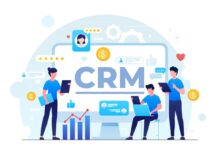PLG Based CRM: 7 Powerful Reasons to Switch Now
In today’s fast-paced digital world, a PLG based CRM isn’t just a trend—it’s a game-changer. Discover how product-led growth is reshaping customer relationship management for smarter, scalable success.
What Is a PLG Based CRM?

The term PLG based CRM refers to a Customer Relationship Management system built on the principles of Product-Led Growth (PLG). Unlike traditional CRMs that rely heavily on sales teams and marketing funnels to drive adoption, a PLG based CRM puts the product itself at the center of the customer journey. Users are onboarded, engaged, and retained primarily through their direct interaction with the product—often starting with a free or freemium version.
Defining Product-Led Growth (PLG)
Product-Led Growth is a go-to-market strategy where the product serves as the primary driver of customer acquisition, conversion, and expansion. Instead of relying on sales demos or aggressive marketing campaigns, companies empower users to experience the product’s value firsthand. This self-serve model reduces friction, accelerates time-to-value, and fosters organic growth.
According to OpenView Partners, one of the leading advocates of PLG, companies like Slack, Zoom, and Notion have scaled rapidly by allowing users to “try before they buy,” creating viral loops and high retention rates.
How PLG Differs from Traditional CRM Models
Traditional CRM systems are typically sales-led or marketing-led. They require significant human intervention—sales reps calling leads, marketers running campaigns, and customer success teams onboarding new clients. In contrast, a plg based crm automates much of this process. The product guides users through onboarding, feature discovery, and even upselling.
- Sales-led CRM: Relies on outbound calls, demos, and negotiations.
- Marketing-led CRM: Depends on content, ads, and lead nurturing.
- Product-led CRM: Leverages in-app experiences, user behavior, and data-driven nudges.
“The best products don’t need to be sold—they sell themselves.” — Blake Bartlett, Partner at OpenView
Key Features of a PLG Based CRM
A successful plg based crm is not just a repackaged traditional CRM with a self-serve signup. It’s engineered from the ground up to support user autonomy, rapid onboarding, and data-informed growth. Let’s explore the core features that define this modern approach.
Self-Service Onboarding
One of the hallmarks of a PLG based CRM is frictionless onboarding. Users can sign up, explore the interface, and start using core features without speaking to a sales representative. This is achieved through intuitive UI design, interactive walkthroughs, and contextual tooltips.
For example, platforms like HubSpot and Zoho offer guided tours that activate based on user behavior. If a new user lands on the contact management page, a tooltip might appear explaining how to import a CSV file. This just-in-time learning reduces cognitive load and increases feature adoption.
In-App Analytics and User Behavior Tracking
To drive product-led growth, a plg based crm must understand how users interact with the platform. This requires robust in-app analytics that track events like feature usage, session duration, and conversion points.
Tools like Mixpanel and Amplitude integrate seamlessly with modern CRMs to provide heatmaps, funnel analysis, and cohort tracking. These insights help product teams identify drop-off points and optimize the user journey. For instance, if 70% of users abandon the workflow automation setup, the team can redesign that flow to be more intuitive.
Automated Upselling and Expansion
Unlike traditional CRMs that rely on sales reps to upsell, a PLG based CRM uses behavioral triggers to suggest upgrades. If a user hits a limit on contacts or starts using advanced reporting features, the system can prompt them with a tailored upgrade offer.
This model is used effectively by companies like Pipedrive and Freshsales. When a user creates their 100th deal, a modal might appear: “You’re doing great! Unlock unlimited deals and AI forecasting with Pro.” This contextual upsell feels helpful, not pushy.
Benefits of Adopting a PLG Based CRM
Switching to a plg based crm offers transformative advantages for businesses looking to scale efficiently. From reduced customer acquisition costs to higher retention, the benefits are both measurable and strategic.
Lower Customer Acquisition Cost (CAC)
One of the most compelling advantages of a PLG based CRM is the dramatic reduction in CAC. Since users sign up and explore the product on their own, companies spend less on sales teams, cold outreach, and paid advertising.
A study by Gartner found that PLG companies achieve 30–50% lower CAC compared to traditional SaaS models. This allows for reinvestment in product development and customer experience.
Faster Time-to-Value (TTV)
In a PLG model, users experience value within minutes, not weeks. A well-designed plg based crm enables users to import contacts, set up pipelines, and send follow-ups in under 10 minutes. This rapid TTV increases activation rates and reduces early churn.
For example, Close.com—a sales CRM with strong PLG elements—offers a 5-minute setup wizard that configures email sync, calling, and task automation instantly. This immediacy builds trust and encourages continued use.
Higher User Retention and Engagement
When users discover value on their own, they’re more likely to stick around. PLG based CRMs foster deeper engagement by aligning feature discovery with user goals. As users achieve small wins—like closing their first deal or automating a follow-up—they become emotionally invested in the product.
According to Forestry, PLG companies report 20–30% higher retention rates than their sales-led counterparts. This is because engagement is driven by utility, not obligation.
Top PLG Based CRM Platforms in 2024
As demand for product-led solutions grows, several CRM platforms have emerged as leaders in the plg based crm space. These tools combine powerful functionality with intuitive design and self-serve models.
HubSpot CRM
HubSpot is often cited as a pioneer of the PLG movement. Its free CRM offers contact management, email tracking, and deal pipelines without requiring a credit card. The platform uses in-app prompts to guide users toward premium features like automation and reporting.
What sets HubSpot apart is its educational content ecosystem. Users can access free courses, certifications, and templates that deepen product understanding and increase stickiness. This blend of product and content creates a powerful flywheel effect.
Pipedrive
Pipedrive focuses on sales pipeline visualization, making it ideal for SMBs and solo entrepreneurs. Its drag-and-drop interface allows users to move deals through stages effortlessly. The free plan includes up to 1,000 contacts and basic automation.
Pipedrive’s onboarding includes a “Setup Assistant” that asks users about their sales process and configures the CRM accordingly. This personalization increases relevance and reduces setup time.
Freshsales (by Freshworks)
Freshsales combines AI-powered insights with a clean, user-friendly interface. Its free plan supports unlimited users and includes phone, email, and chat integration. The platform uses AI to score leads and suggest next steps, helping users prioritize effectively.
One standout feature is the built-in phone system, which allows users to make calls directly from the CRM. This seamless integration reduces context switching and enhances productivity.
How to Transition to a PLG Based CRM
Moving from a traditional CRM to a plg based crm requires more than just switching software—it demands a cultural and operational shift. Here’s how to make the transition smooth and effective.
Assess Your Current CRM Workflow
Begin by mapping out your existing customer journey. Identify pain points such as long onboarding times, low feature adoption, or high support tickets. These gaps will highlight where a PLG approach can add value.
Ask questions like: How long does it take a new user to log their first deal? Are users aware of automation features? Is the sales team spending too much time on manual tasks?
Choose the Right PLG CRM for Your Needs
Not all plg based crm platforms are created equal. Evaluate options based on:
- Onboarding experience: Is it intuitive and fast?
- Scalability: Can it grow with your team?
- Integration ecosystem: Does it connect with your email, calendar, and marketing tools?
- Pricing transparency: Are upgrade paths clear and fair?
Free trials and freemium models allow you to test these factors without commitment.
Train Your Team for a Product-First Mindset
Adopting a PLG based CRM means shifting from a sales-centric to a product-centric culture. Train your team to think in terms of user experience, not just quotas. Encourage them to explore the CRM’s features and share feedback.
Customer success managers should focus on enabling users, not just solving tickets. Sales reps should use the CRM’s insights to personalize outreach, not just log calls.
Common Challenges and How to Overcome Them
While the benefits of a plg based crm are significant, the transition isn’t without hurdles. Understanding these challenges upfront can help you navigate them successfully.
Resistance to Change
Teams accustomed to traditional CRMs may resist a self-serve model. They might fear losing control or visibility over the sales process. To overcome this, involve stakeholders early in the decision-making process.
Run pilot programs with enthusiastic team members and showcase quick wins. For example, if a sales rep closes a deal faster using automated follow-ups, highlight that success in team meetings.
Data Migration Issues
Moving data from an old CRM to a new plg based crm can be complex. Incomplete imports or formatting errors can undermine trust in the new system.
To mitigate this, use official migration tools or third-party services like Zapier or Tray.io. Always back up your data before starting and validate key fields (e.g., contact names, deal stages) post-migration.
Underutilization of Features
One risk with self-serve platforms is that users only scratch the surface. They might use basic contact management but ignore automation, reporting, or AI insights.
Combat this with ongoing in-app education. Use tooltips, checklists, and milestone celebrations to guide users toward advanced features. For example, after a user logs 10 deals, prompt them: “Ready to automate your follow-ups? Try our Sequence Builder.”
The Future of PLG Based CRM
The evolution of plg based crm is far from over. As AI, automation, and user expectations continue to advance, these platforms will become even more intelligent and intuitive.
AI-Powered Personalization
Future PLG based CRMs will leverage AI to deliver hyper-personalized experiences. Imagine a CRM that learns your communication style and drafts emails in your voice, or one that predicts which leads are most likely to convert based on past behavior.
Companies like Salesforce are already integrating Einstein AI to offer predictive lead scoring. As these technologies mature, they’ll become standard in PLG platforms.
Embedded Collaboration Tools
CRMs will no longer be siloed systems. The next generation of plg based crm will include built-in chat, video calling, and project management features—turning the CRM into a central hub for customer interactions.
For example, a sales rep could start a video call with a prospect directly from the deal record, then assign follow-up tasks to teammates without leaving the app.
Deeper Integration with Marketing and Support
The line between CRM, marketing automation, and customer support will blur. PLG based CRMs will offer unified dashboards that show a 360-degree view of the customer journey—from first website visit to post-sale support tickets.
This holistic approach will enable teams to collaborate more effectively and deliver consistent experiences across touchpoints.
What is a PLG based CRM?
A PLG based CRM is a Customer Relationship Management system that uses Product-Led Growth as its core strategy. Instead of relying on sales teams to drive adoption, it empowers users to discover value through self-service onboarding, in-app guidance, and automated workflows.
How does a PLG CRM reduce customer acquisition costs?
By enabling users to sign up and experience the product independently, a PLG based CRM minimizes the need for large sales and marketing teams. This self-serve model significantly lowers the cost of acquiring each customer.
Can small businesses benefit from a PLG based CRM?
Absolutely. PLG based CRMs are ideal for small businesses because they are typically affordable, easy to set up, and scalable. They allow small teams to automate tasks and focus on high-impact activities without needing dedicated IT or sales operations staff.
What are the best free PLG CRM options?
Top free PLG CRM platforms include HubSpot CRM, Zoho CRM, and Freshsales. These offer robust features without requiring a credit card and provide clear upgrade paths as your business grows.
Is data secure in a PLG based CRM?
Yes, reputable PLG based CRM providers prioritize data security with encryption, compliance certifications (like GDPR and SOC 2), and regular audits. Always review a provider’s security policies before migrating sensitive customer data.
Adopting a PLG based CRM is more than a software upgrade—it’s a strategic shift toward user empowerment and sustainable growth. By putting the product at the center of the customer journey, businesses can reduce costs, accelerate onboarding, and build deeper relationships. As technology evolves, the future of CRM lies in intelligence, integration, and autonomy. Now is the time to embrace the power of product-led growth.
Further Reading:



